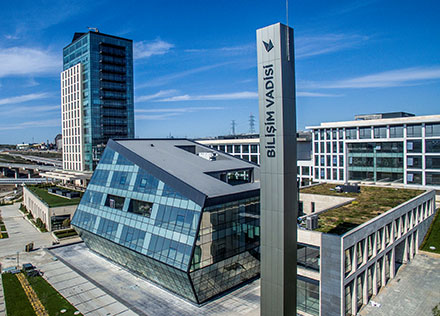It is vital that facilities that use, produce or store hazardous substances or chemicals are managed properly. It is necessary to prevent structural failure or loss of stability of the hazardous substances used by these enterprises or the energy they use, which could lead to a major accident, and this is only possible with process safety management.
The term "process safety management" comes from a regulation that requires businesses to properly manage hazardous chemicals in order to create safe workplaces and prevent "unexpected releases of toxic, reactive, or flammable liquids and gases" that could cause hazardous chemicals. Process safety management systems typically consist of process platforms, specialized procedures and management structures.
The term "process safety" also resembles the term "Process Safety". However, whereas process safety is only concerned with mental or physical harm to people, the goal of process safety is to minimize or, even better, prevent process stoppages, disruption of the integrity of all the equipment that makes up the process, damage and losses. Thus, it aims to prevent catastrophic technological accidents and to protect neighboring enterprises and civilian settlements.
In order to explain the term " Process Safety" a little more and illustrate the degree of danger, it is useful to recall some cases of technological accidents. One of them is the gas tragedy in Bhopal on December 3, 1984. As a result of this incident, 150 thousand people were poisoned and 20 thousand people died. On April 26, 1986, the Chernobyl disaster directly or indirectly led to the death of 200 thousand people, and the region still remains unusable. The oil spill on the Deepwater Horizon platform in the Gulf of Mexico on 20 April 2010 is known as the largest oil spill in history, which is estimated to have killed 11 people and injured 17 others, and leaked 4.9 million barrels of oil. Unfortunately, the examples could go on.
One of the processes that must be performed to protect your processes from hazards is Hazard and Operational Analysis. Hazard and Operational Analysis is also known as HAZOP, and the word HAZOP is an abbreviation of the English term "Hazard and Operability Analysis". Hazard and Operability Analysis (HAZOP) is a technique used to identify the processes in a system and the hazards associated with those processes and is a very methodical process. Although it seems like a simple process in theory, the steps that need to be performed should be analyzed very carefully. This analysis uses the guiding words and process parameters to identify process hazards and is carried out by a team led by a team leader, comprising people with expertise in various fields such as engineering, chemistry, health and safety and maintenance. Determining deviations from the design intent as a result of combining process variables such as flow, pressure, reaction, viscosity, corrosion, with benchmark words such as "none", "little", "reverse", "partial", etc. is the essence of HAZOP analysis. In an industrial plant, parameters such as annual production or waste quantity are considered as primary design goals, while the secondary goal will be the safest operation of the system. Oskon Automation can help you protect your business from process risks by performing a Hazard and Operability Analysis (HAZOP) for you.
There are also certifications that play an important role in regulating the process safety. One of them is ATEX. ATEX is a French word formed by combining the first syllables of the words "ATmosphéres EXplosives" (explosives). ATEX generally refers to the hazard of an explosive atmosphere in the workplace due to the presence of flammable gases or flammable dusts mixed in the air that may cause a risk of explosion. ATEX certification is a requirement to ensure safety in the workplace by determining the suitability of equipment for use in potentially explosive atmospheres. Certification typically involves a neutral third party conducting testing as part of the certification process. However, companies may certify certain minor equipment themselves, such as technical drawings and operating instructions. Certified equipment receives the "CE" mark to indicate conformity and an additional "Ex" mark to indicate official certification under the ATEX directive. Oskon Automation supports you in the certification process and helps you both to ensure safety in your workplace and to obtain ATEX certification.
Process safety management is a complex process and requires a multidimensional approach that includes both technological and management solutions. As physical simulation is usually very time consuming, black box simulation is often used to gain insight into the overall process.
Oskon Automation supports you with its professional consultants in all your process safety processes and certification procedures.
 EN
EN
 TR
TR DE
DE AE
AE UA
UA AZ
AZ

 About Us
About Us Our Business Partners
Our Business Partners Organizational Chart
Organizational Chart Our References
Our References Our Certificates
Our Certificates Human Resources
Human Resources Factory Automation
Factory Automation Process Automation
Process Automation Digitalization
Digitalization Software Development
Software Development After-Sales Support
After-Sales Support Sales and Marketing
Sales and Marketing Project Management and Consultancy
Project Management and Consultancy  Opcenter (MES-MOM)
Opcenter (MES-MOM) Autonomous Crane Systems
Autonomous Crane Systems Material Tracking System (MTS)
Material Tracking System (MTS) Batch Systems (ISA-88)
Batch Systems (ISA-88) Automated Mobile Robot (AMR)
Automated Mobile Robot (AMR) Safety (IEC 61511)
Safety (IEC 61511) Solution 4.0
Solution 4.0 Smart Sorting Lines (Sorters)
Smart Sorting Lines (Sorters) Automotive Industry
Automotive Industry Chemicals
Chemicals Seamanship (Shipbuilding Factory)
Seamanship (Shipbuilding Factory) Food Products
Food Products Intralogistics
Intralogistics Iron and Steel
Iron and Steel Cable
Cable



